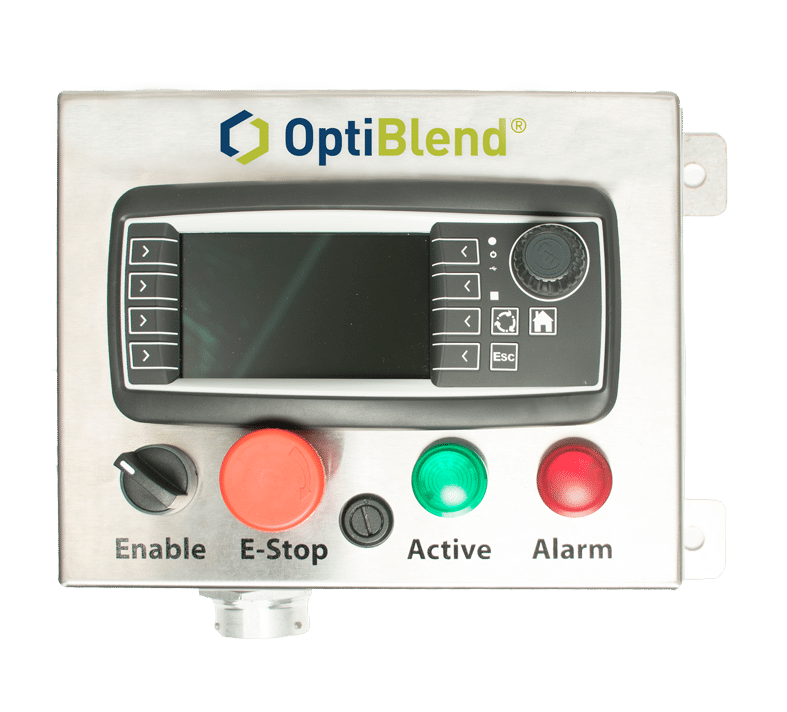Bi Fuel Control Panel
Bi-Fuel Control Panel
No special tools are required to install or operate the OptiBlend® kit and every setting can be changed via the Human-Machine Interface (HMI) making over-the-phone technical support possible. Often, any issues that arise can be solved without an OptiBlend® technician on site, which saves expense and minimizes downtime. All components are extremely robust, require very little maintenance, and are designed to stay powered on and in constant use, ready for immediate action for years.
The control panel features two LEDs and two switches for general day-to-day operation. The E-Stop or Emergency Shutdown Switch controls power flow to all OptiBlend® instrumentation and components. The Enable switch allows dual fuel operation. The LEDs indicate system operating status and the alarm state. The cabinet is rated NEMA 4X certified. The HMI is a ruggedly designed, fully enclosed operator terminal.
The HMI display, BUS connections, and USB port are enclosed in a stainless steel 10” x 8” x 4.5” enclosure. Location of the panel should allow for easy access to the Emergency Stop switch and dual fuel Enable switch. The harness and connections are routed and secured along the gas train and gas plumbing to the transducer connections. Connections to the control panel should be securely routed and out of the way of any moving parts or hot surfaces.
The gas fuel controller is a Programmable Logic Controller (PLC), typically mounted on the controller plate. The PLC has two alarm levels: the first will reduce the gas fumigated to the engine, the second will disable gas flow by de-energizing the gas solenoid. All alarm levels are programmed according to the engine specifications and OptiBlend® system calibration. The following parameters and sensors are used to determine if an alarm is set:
- Exhaust gas temp: Up to 6 thermocouples
- Vibration level: Used to detect governor instability and misfire
- Engine load level: Generator load, pump pressure, or engine power
- Engine speed: RPM or frequency
- Diesel fuel flow: Used to detect high displacement (if available)
- Manifold pressure: Optional input for manifold pressure balancing on dual-bank engines

